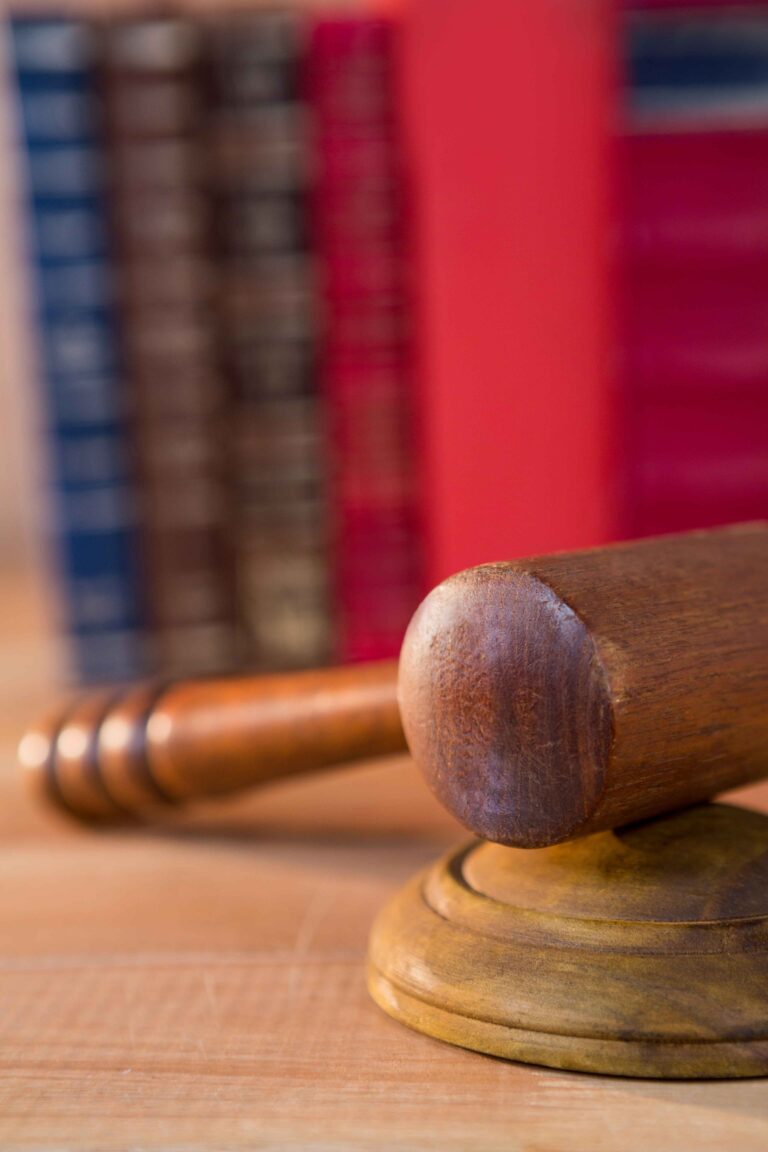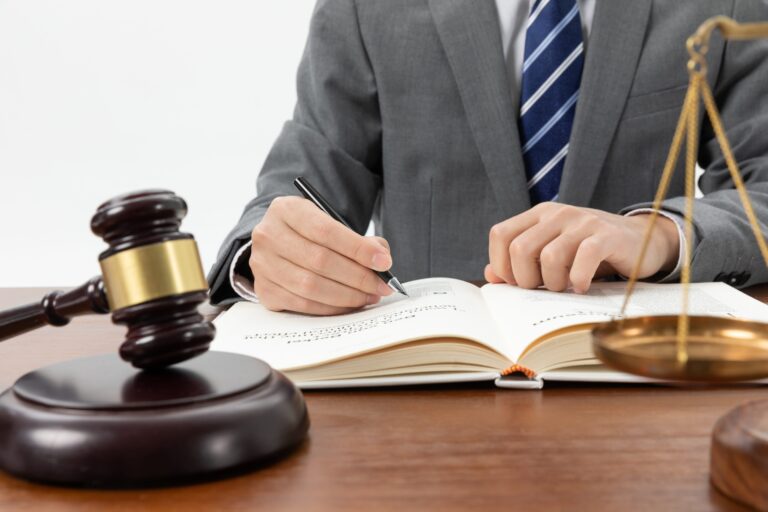Unlocking the Power of Justice: Understanding Article 32 of the Indian Constitution
Introduction:
Concealed away in the complex text of the Indian Constitution, Article 32 is a ray of optimism, a defender of the rule of law, and a strong bulwark of personal freedom. Often referred to as the “heart and soul” of the Indian Constitution, this constitutional article guarantees citizens the fundamental right to constitutional remedies, making justice a real, albeit abstract, reality.
The founders of the Constitution envisioned Article 32 as a powerful instrument to protect people’s rights since it allows anyone to file a direct appeal with the Supreme Court of India in situations where their fundamental rights have been violated. This article demonstrates the vision of those who created India’s founding text; it is grounded in historical imperatives and draws inspiration from international constitutional traditions.
As we set out to untangle the complexities of Article 32, it becomes necessary to investigate its historical background, scrutinize its textual subtleties, and recognize its crucial function in molding the country’s judicial system. From its inception to its current significance, Article 32 has been crucial in forming important rulings that have defined individual rights and permanently impacted the development of constitutional law in India.
Through the prism of seminal cases, we will examine the impact of Article 32, its writ jurisdiction, and its function as a custodian of basic rights as we negotiate its complex elements. We encourage you to read Article 32 carefully in order to understand the core of justice that is deeply ingrained in its provisions.
Join us as we examine and appreciate the meaning of Article 32, a pillar supporting the Republic of India’s democratic structure, and discover the power of justice.

Article 32 - Remedies for enforcement of rights conferred by this Part:
- The right to move the Supreme Court by appropriate proceedings for the enforcement of the rights conferred by this Part is guaranteed.
- The Supreme Court shall have the power to issue directions or orders or writs, including writs in the nature of habeas corpus, mandamus, prohibition, quo warranto, and certiorari, whichever may be appropriate, for the enforcement of any of the rights conferred by this Part.
- Without prejudice to the powers conferred on the Supreme Court by clauses (1) and (2), Parliament may by law empower any other court to exercise within the local limits of its jurisdiction all or any of the powers exercisable by the Supreme Court under clause (2).
- The right guaranteed by this article shall not be suspended except as otherwise provided for by this Constitution.
Writ Jurisdiction:
Writ jurisdiction, as outlined in Article 32 of the Constitution of India, empowers the Supreme Court to issue various writs for the enforcement of fundamental rights. The relevant portion of Article 32 (2) enumerates the types of writs that the Supreme Court can issue. Here is a brief overview of each type:
- Habeas Corpus:
This writ translates to “produce the body” and is issued to safeguard an individual’s personal liberty. It ensures that a person is not detained unlawfully, and if they are, the court can order their release.
- Mandamus:
Mandamus means “we command.” This writ is issued to public officials or authorities to compel them to perform a duty that is legally incumbent upon them. It is a directive order from the court to ensure that a public official fulfills their statutory obligations.
- Prohibition:
Prohibition is a writ that prohibits a lower court or tribunal from exceeding its jurisdiction or acting contrary to the rules of natural justice. It is issued to prevent a judicial body from continuing proceedings in excess of its authority.
- Quo Warranto:
Quo Warranto means “by what authority.” This writ is issued to inquire into the legality of a person holding a public office and the authority by which they hold that office. It ensures that individuals in public office meet the necessary qualifications and have the legal right to hold the position.
- Certiorari:
Certiorari means “to be certified.” This writ is issued to quash the orders or decisions of inferior courts, tribunals, or quasi-judicial bodies if they are found to be in excess of their jurisdiction or illegal. It brings the lower court’s record before the higher court for review.
Historical Context: Paving the Path to Justice
To fully understand the meaning of Article 32 of the Indian Constitution, one needs to travel back to the turbulent pre-independence period and the zeal for nation-building. An inspiring story of a young country dedicated to justice, individual liberties, and protecting its people from any intrusion on their rights can be found in the historical background surrounding the adoption of Article 32.
The safeguarding of fundamental rights was a serious concern for the writers of the Constitution, which is where Article 32 got its start. The architects of independent India were shaped by the harsh realities of colonial rule when people’s rights were frequently violated without consequence. As such, they aimed to create a legal system that would serve as the cornerstone of a society that was equitable and just.
Passionate talks about the necessity of a strong mechanism to enforce fundamental rights reverberate from the Constituent Assembly debates. During these discussions, Article 32—the “very soul of the Constitution”—was underlined by Dr. B.R. Ambedkar, the principal architect of the Indian Constitution. The framers recognized that the mere inclusion of fundamental rights in the Constitution would be futile without an effective remedy for their enforcement.
The American Constitution’s writ of habeas corpus, the Australian Constitution’s emphasis on the judiciary’s independence, and the Irish Constitution’s recognition of the right to petition directly to the Supreme Court are just a few of the sources from which the framers of the Indian Constitution drew inspiration for Article 32. Nevertheless, they modified these models to fit the peculiar sociopolitical context of India. The historical scars of oppression, in conjunction with the idealistic vision of a just society, forced the framers to confer extraordinary powers on the judiciary through Article 32. They envisioned the Supreme Court as the supreme guardian of citizens’ rights, acting as a foundation against any potential authoritarianism.
We see the strands of the independence movement, the resonance of a popular desire for justice, and the determination to create a country in which individual rights would be inalienable in the historical tapestry that gave rise to Article 32. Exploring the historical terrain helps us understand the goals that paved the way for Article 32, which brings it to a unique and significant place in the Indian Constitution.
Scope of Article 32: Safeguarding Fundamental Rights with Judicial Precision
Article 32 of the Indian Constitution is a powerful cornerstone of the country’s legal system, with a wide and significant reach that is consistent with the fundamental values of fairness and personal liberty. Article 32’s purview goes far beyond merely providing for judicial recourse; it captures the spirit of guaranteeing equity, fairness, and the defense of fundamental rights for all citizens.
- Fundamental Right to Constitutional Remedies:
Fundamentally, Article 32 gives every person the right to petition the Supreme Court to have their fundamental rights upheld. This clause gives people the ability to go straight to the highest court, avoiding inferior courts, to file complaints when their fundamental rights are violated. This was seen by the framers as a crucial protection against the encroachment or diluting of constitutional rights.
- Writ Jurisdiction:
One unique aspect of Article 32 is that it grants the Supreme Court writ jurisdiction. This section gives the Supreme Court the power to grant writs, including certiorari, prohibition, habeas corpus, and mandamus. These writs are powerful instruments that the court can use to swiftly and efficiently address injustices while safeguarding and upholding individual rights.
- Emergency Provisions:
Certain adjustments are made to the scope of Article 32 during moments of emergency. Article 32 itself is not suspended during a proclamation of emergency under Article 359, but the ability to petition the Supreme Court for the enforcement of fundamental rights is. This highlights how strong Article 32 is as a constitutional protection, especially in trying circumstances.
- Public Interest Litigation (PIL):
Public Interest Litigation (PIL) has significantly broadened the scope of Article 32 over its history. Through the use of this creative legal technique, people or groups can petition the court on behalf of those who might not be able to do so on their own. The judiciary has been able to handle matters of public concern thanks to the expansive reading of Article 32, guaranteeing that justice is served to the weaker and more disenfranchised segments of society.
- Defender of Fundamental Rights:
Article 32 positions the Supreme Court as the ultimate defender of fundamental rights, acting as a check against potential excesses by the executive or legislative branches. The judiciary, through its expansive interpretation of Article 32, has played a crucial role in shaping and protecting the constitutional liberties of citizens.
In essence, the scope of Article 32 is not confined to legal technicalities; it symbolizes the commitment of the Constitution to uphold justice, equality, and the dignity of every individual. As we navigate the contours of Article 32, we encounter a provision that not only empowers citizens but also imbues the judiciary with the responsibility of being the vigilant guardian of the constitutional rights of the people.
Guardian of Fundamental Rights: Article 32's Sentinel Role in Upholding Constitutional Liberties
Article 32 of the Indian Constitution is not only a legal provision; it is also a resolute protector charged with the grave responsibility of defending and upholding every citizen’s fundamental rights. Article 32, which positions the Supreme Court as the guardian of constitutional rights, gives it the authority to serve as a watchful steward, making sure that the light of justice reaches even the most remote areas where possible oppression may exist.
- Proactive Enforcement:
Article 32 elevates the Supreme Court to a proactive role in the protection of fundamental rights. Unlike other legal remedies, it enables individuals to directly approach the apex court, seeking swift and direct redress for violations of their constitutional rights. This proactive stance distinguishes Article 32 as a powerful instrument for immediate justice.
- Judicial Review:
By conferring writ jurisdiction upon the Supreme Court, Article 32 endows it with the authority to engage in judicial review. This implies a comprehensive examination of laws, executive actions, or policies to ensure their conformity with constitutional principles. The judiciary, through Article 32, acts as the ultimate arbiter, holding the power to strike down laws or actions inconsistent with fundamental rights.
- Check Against Executive and Legislative Excesses:
The framers of the Constitution envisioned Article 32 as a bulwark against potential excesses by the executive and legislative branches. It stands as a check against arbitrary state actions that could infringe upon the rights and liberties of citizens. The Supreme Court, through its writ jurisdiction, intervenes to rectify imbalances and protect individuals from overreach by the government.
- Role in Landmark Cases:
Over the years, the Supreme Court, wielding the authority granted by Article 32, has played a pivotal role in delivering landmark judgments that have shaped the contours of constitutional law in India. From expanding the scope of fundamental rights to interpreting them in the context of evolving societal norms, the court has acted as a guiding force in safeguarding individual freedoms.
- Access to Justice for Vulnerable Sections:
Article 32, coupled with the innovative concept of Public Interest Litigation (PIL), extends its protective embrace to the marginalized and vulnerable sections of society. The judiciary, as the guardian of fundamental rights, ensures that justice is not a privilege reserved for the powerful but a right accessible to all, regardless of socio-economic status.
Article 32 essentially establishes the Supreme Court as a sentinel, keeping watch on the fundamental rights guaranteed by the Constitution, rather than just a court. It affirms the constitutional guarantee that justice will prevail and that no one will be stripped of their rights without following the proper procedures and having access to the Supreme Court of India, the vigilant guardian, and it reflects the judiciary’s dedication to being the ultimate defender of citizens’ liberty.
Landmark Cases of Article 32:
The Indian Constitution’s Article 32 has served as the foundation for several seminal cases that have influenced the development of jurisprudence and strengthened the promise made in the document to protect fundamental rights. The judiciary has expanded, interpreted, and upheld the tapestry of individual liberty woven into the Constitution via the lens of these instances. The following landmark instances serve as guides for Article 32’s development:
Landmark Cases: Article 32’s Jurisprudential Odyssey in Upholding Fundamental Rights
Article 32 of the Constitution of India has been the crucible for numerous landmark cases that have shaped the jurisprudential landscape, reinforcing the constitutional commitment to safeguard fundamental rights. Through the prism of these cases, the judiciary has interpreted, expanded, and defended the tapestry of individual liberties woven into the constitutional fabric. Here are some seminal cases that stand as beacons in Article 32’s journey:
- Kesavananda Bharati v. State of Kerala (1973):
- In a watershed moment, the Supreme Court declared that the basic structure of the Constitution is inviolable. This case marked a crucial turning point, ensuring that while Parliament has the power to amend the Constitution, it cannot alter its basic features.
- Maneka Gandhi v. Union of India (1978):
- This landmark case expanded the scope of personal liberty under Article 21, asserting that the procedure established by law must be fair and reasonable. It introduced the concept that the law must not be arbitrary, and due process must adhere to principles of natural justice.
- K. Gopalan v. State of Madras (1950):
- In a pivotal case, the court examined the scope of preventive detention and upheld the right to life and personal liberty as per Article 21. This decision laid the foundation for later cases that interpreted the expansive meaning of the right to life.
- Minerva Mills Ltd. v. Union of India (1980):
- This case reiterated the doctrine of the basic structure and struck down parts of the 42nd Amendment that sought to give Parliament unbridled power to amend the Constitution. It reinforced the judiciary’s role as the guardian of the Constitution.
- Roe v. Wade (1973):
- While not an Indian case, its impact on India’s legal discourse is profound. The Supreme Court of the United States recognized a woman’s right to choose to have an abortion as a fundamental right, influencing discussions on reproductive rights in India.
- Francis Coralie Mullin v. Union Territory of Delhi (1981):
- This case expanded the scope of Article 21, recognizing the right to live with human dignity, encompassing the right to shelter, clean environment, and adequate nutrition. It broadened the understanding of fundamental rights to include socio-economic rights.
- Olga Tellis v. Bombay Municipal Corporation (1985):
- In this case, the court addressed the right to livelihood as an integral facet of the right to life under Article 21. It was a landmark judgment that recognized that the right to life extends beyond mere animal existence.
- Vishaka v. State of Rajasthan (1997):
- This case laid down guidelines to prevent sexual harassment at workplaces, emphasizing the right to gender equality and the right to work with dignity. It showcased the court’s proactive role in protecting fundamental rights in the evolving societal context.
These examples show how Article 32 has been used to create new guidelines for the defense and interpretation of fundamental rights, creating a patchwork of landmark judicial decisions. They highlight the judiciary’s adaptable role in addressing societal shifts and preserving the promise of justice, liberty, and equality outlined in the Constitution for each and every citizen.
Famous people appeal about Article 32
- B.R. Ambedkar:
- As the principal architect of the Indian Constitution, Dr. Ambedkar underscored the importance of Article 32 during the Constituent Assembly debates. He referred to it as the “very soul of the Constitution” and emphasized its role in ensuring that fundamental rights are not mere parchment rights but are enforceable.
- Justice V.R. Krishna Iyer:
- Justice Iyer, a distinguished jurist, expressed the view that Article 32 is a unique feature of the Indian Constitution that makes the Supreme Court a custodian of the fundamental rights of citizens. He highlighted the court’s duty to act as a sentinel on the qui vive, protecting individual liberties.
- Nani Palkhivala:
- Eminent jurist Nani Palkhivala, in his speeches and writings, often emphasized the crucial role of Article 32 in providing citizens with a direct remedy against any violation of their fundamental rights. He considered it a powerful instrument for justice and a cornerstone of the constitutional framework.
- Fali S. Nariman:
- Renowned constitutional expert Fali S. Nariman has spoken about the significance of Article 32 in ensuring access to justice for all citizens. He has highlighted how the provision enables individuals to directly approach the Supreme Court, making it a vital tool for the protection of fundamental rights.
- Justice R.M. Lodha:
- Former Chief Justice of India, Justice Lodha, has emphasized the pivotal role of Article 32 in maintaining the delicate balance of powers and protecting citizens from arbitrary actions. He reiterated the responsibility of the judiciary to act as the ultimate protector of fundamental rights.
- Public Figures and Activists:
- Various public figures, human rights activists, and advocates have invoked Article 32 to address issues ranging from environmental concerns to social justice. Their calls often center around the idea that Article 32 empowers individuals and groups to seek justice directly from the Supreme Court when fundamental rights are at stake.
We hope this will help you in the immeasurable growth of your knowledge. For more interesting content visit legalaidmate.com
Every Indian citizen has the right, under Article 32 of the Indian Constitution, to petition the Supreme Court for a constitutional remedy if their fundamental rights have been violated.
This writ translates to “produce the body” and is issued to safeguard an individual’s personal liberty. It ensures that a person is not detained unlawfully, and if they are, the court can order their release.



